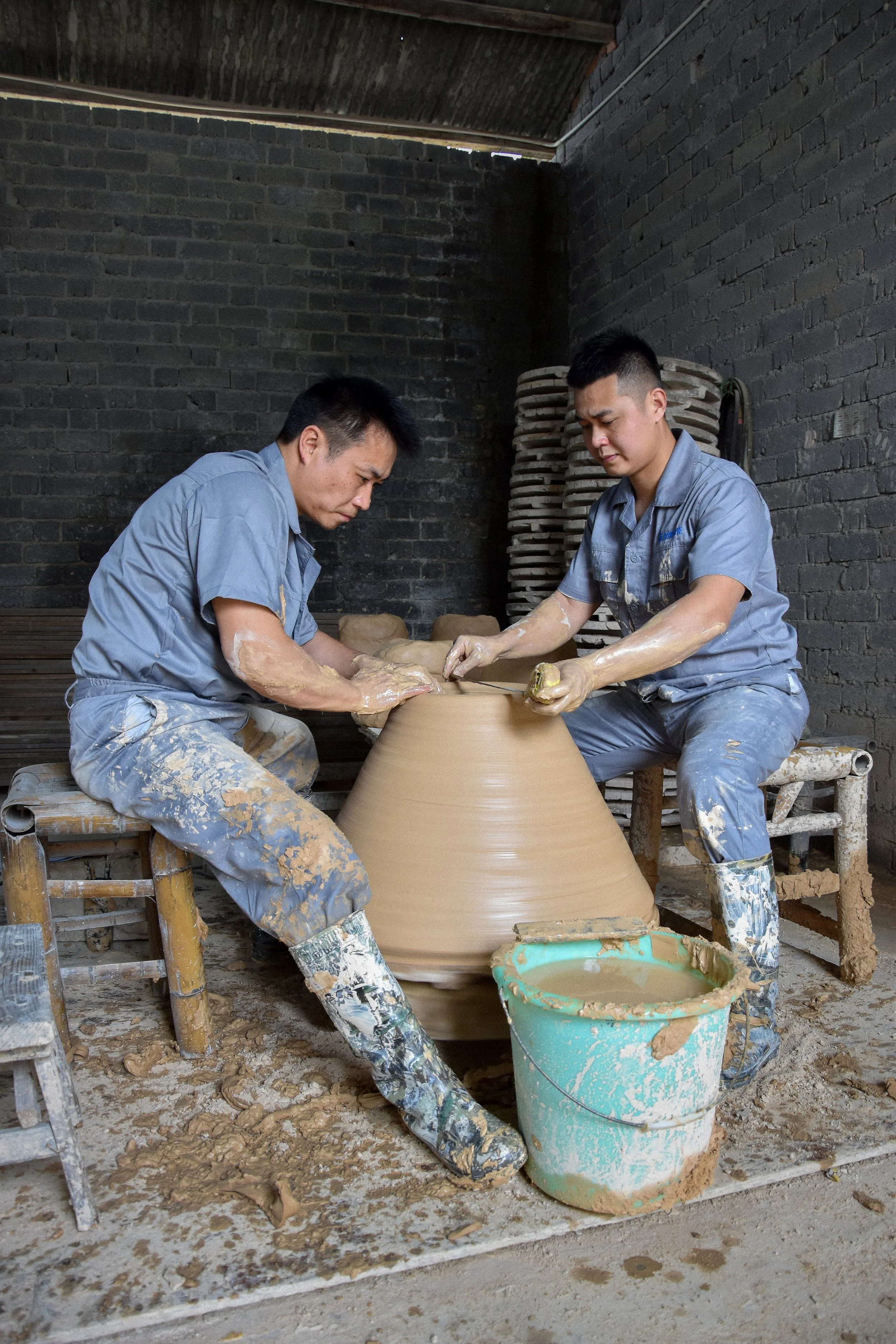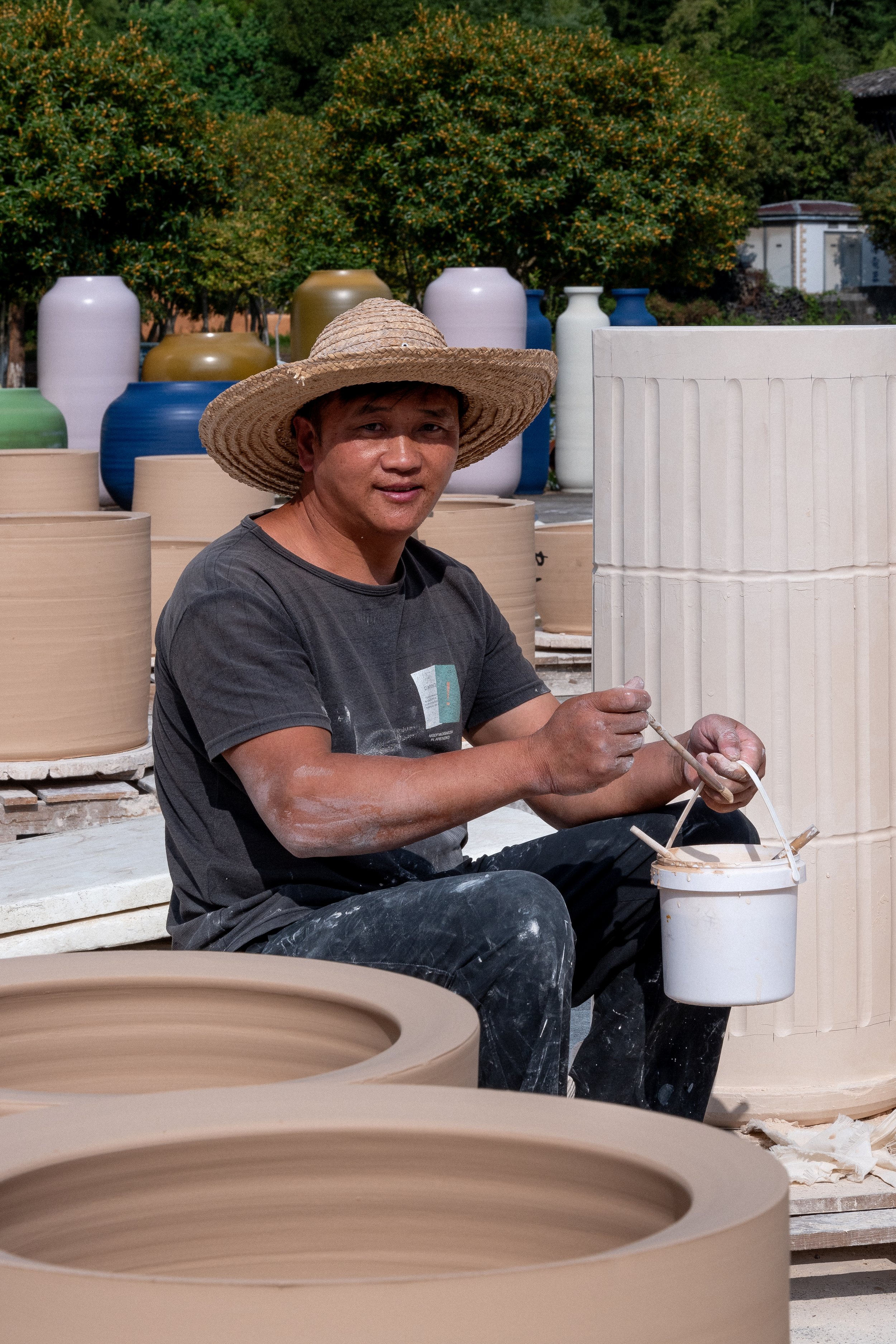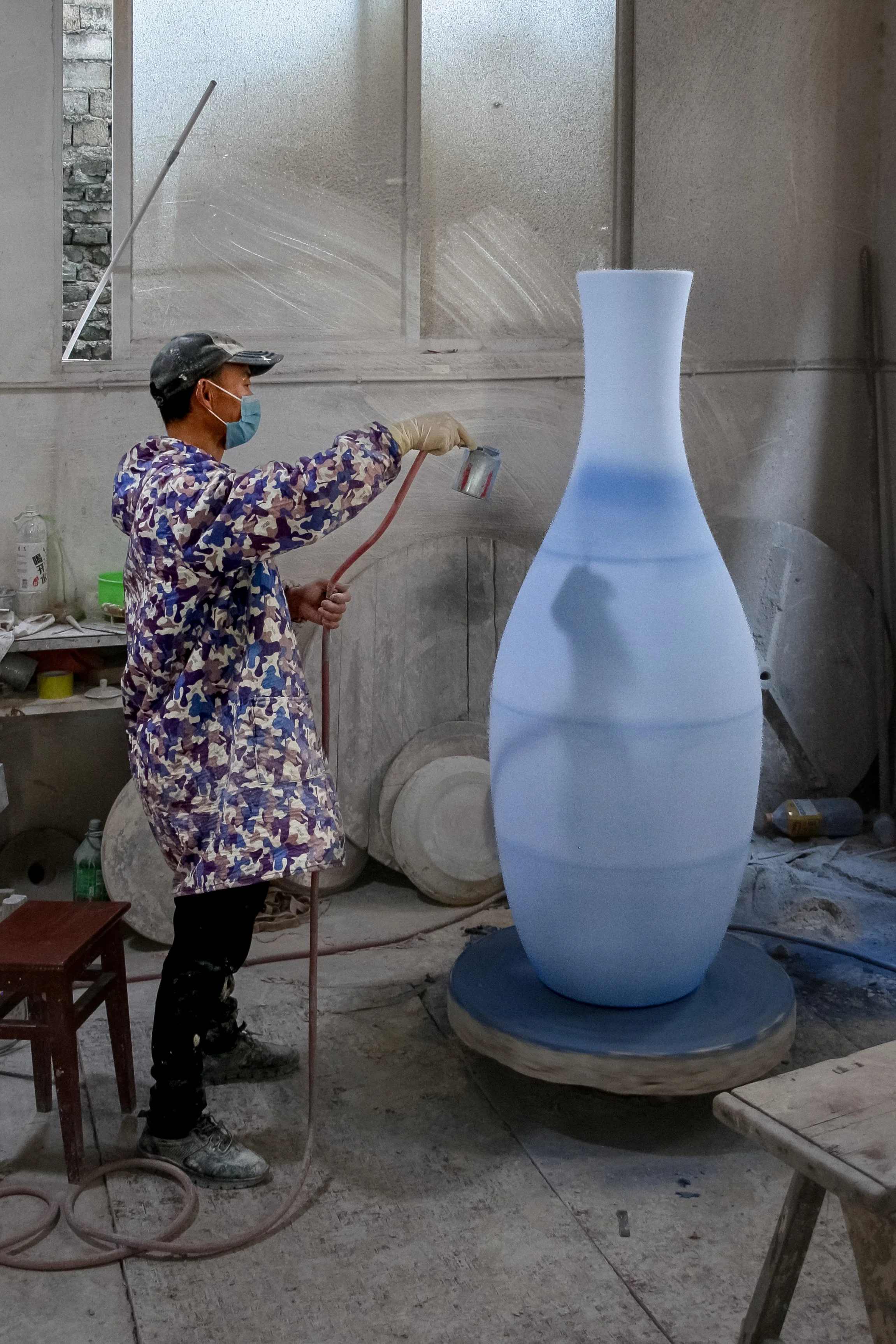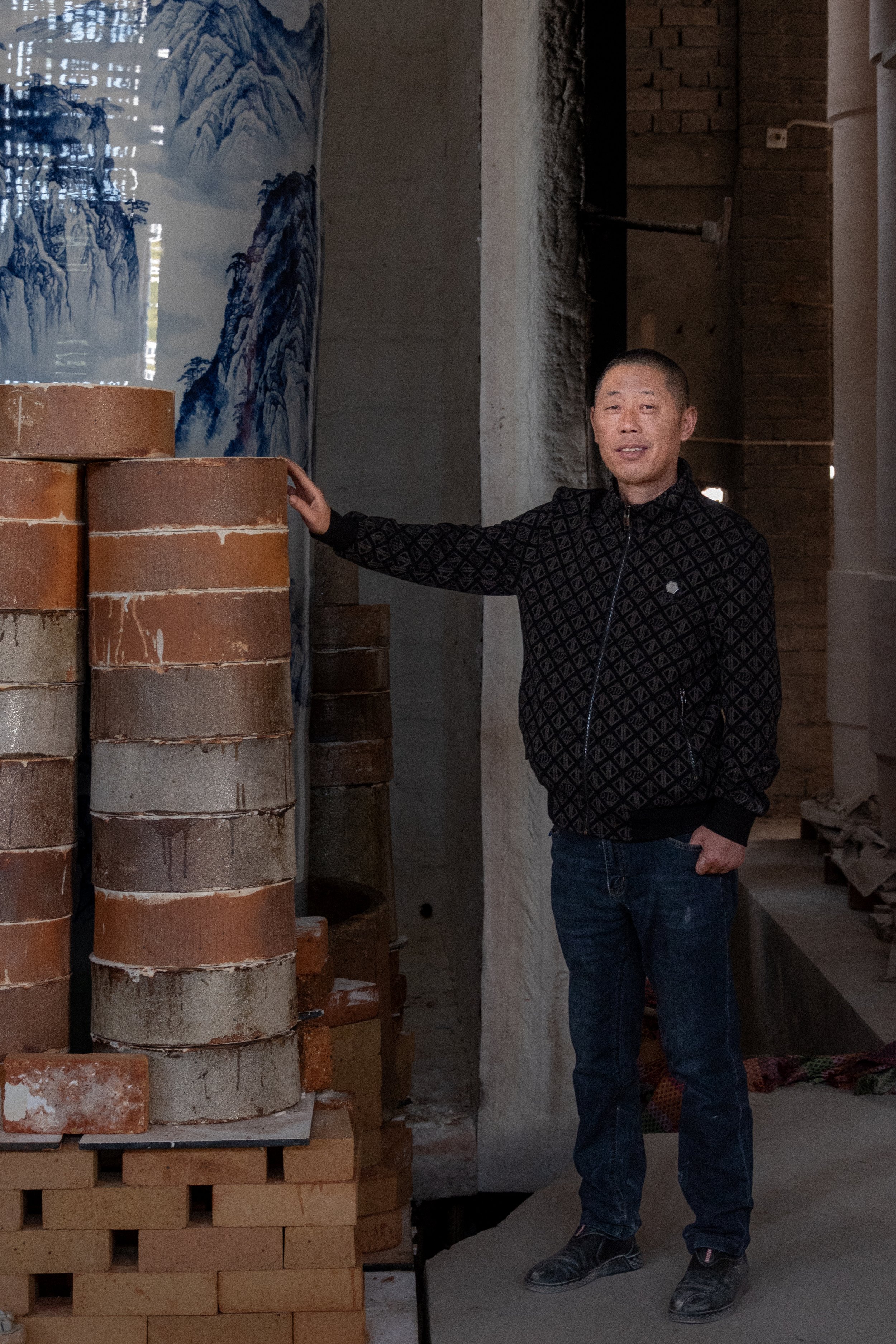PRODUCTION
Whether for a design from our own collection or a completely new product for a client, our manufacturing offers many beautiful possibilities. There is a large variety of forming and decoration techniques that can be applied on almost every porcelain object. Several stages in the production process can be customized. Here you can find an overview of production process.
Zhou Heng - Master wheel thrower
1. WHEEL THROWING
Blocks of porcelain clay are prepared by the assistant and put on the wheel. Different types of clay can be used, some result in pure white porcelain, others more light brown. The blocks of clay are formed on the wheel by the master thrower. For larger pieces, typically one, two or even three (!) assistants help to give pressure on the hands of the master. Only this way objects so large can be wheel thrown.
Feng Tangbing - Assistant
2. ASSEMBLING
Larger vases, planters or pots are always thrown in segments, simply because it is impossible to wheel throw pieces that are higher than the length of the arm. Also, because the pieces would become too heavy to handle while they are drying.
The segments are dried in the sun and then trimmed approximately to the right diameter. These segments are then assembled together with clay slip.The seems are filled up with clay slip a couple of times.
Wan Jianyue - Trimmer
3. TRIMMING
The dried forms are trimmed twice. The first time when the segments are dry. The second time when the form has been assembled. The assembled and dried clay form is precisely trimmed to the final form and dimension.
During firing, the porcelain form shrinks about 13%. Therefore, the dimensions of the design are scaled up. The shrinking and deformation during the firing is also different in the height and width direction. The craftsmen have to make an approximation of the dimensions and proportions of the clay forms, using their knowledge and experience.
Zhang Xiaohua - Master painter
4. DECORATING
PAINTING
Directly applied to a dried clay form, or on a layer of white glaze, hand painted decorations are covered with transparent glaze (that is white when applied) before the firing process. This technique is typically used in the classic blue and white painted porcelain, but also with other colors. Once a glazed porcelain form has been fired at 1300°C, low-temperature fired painting—or ‘overglaze’—can be added on top. This extra layer is mostly used for adding detailed decorations with a look similar to oil painting. This type of painting does not flow much during firing and therefore can maintain fine details. A second firing at around 800°C fixes the overglaze decoration to the surface.
CARVING
The surface of the dried clay form can be decorated with hand-carved forms to make beautiful textures.
LUSTER
Different lusters such as gold and silver can be applied on top of a fired, glazed surface and fixed using a second firing at around 800°C.
DECALS
Printed decals can also be applied under or over the glaze giving different types of results. They are usually applied before a second firing.
Yu Guibao - Glazer
5. GLAZING
Glaze can be applied by dipping or brushing, but large objects are usually sprayed for an even result. The layer thickness is crucial, as some glazes can become too light or too dark, or start to drip. This all depends on the type of glaze and requires experience from the glazer. In Jingdezhen, and so at WL Ceramics, the possibilities for glazes are endless. Some glazes are very stable and have always the same result, otherbglazes are very unpredictable.
Huang Jie - Kiln operator
6. FIRING
The pieces that are ready for firing are carefully stacked on the kiln platform that rolls on rails. Fireproof bricks and kiln shelves are used to fill up the kiln as much as possible. At WL Ceramics there are kilns op to 4 meters high, making this a unique place for the production of large sized works.
When the platform is fully stacked, it is slowly pushed into the kiln and the fire is lit. Typically, the kilns in Jingdezhen are heated with gas. This results in a so-called ‘reduction’ firing, meaning that the level of oxygen is very low in the kiln during the firing, since the fire burns all oxygen. Because of the ‘reduction firing’ all kinds of special glazes and effects can be applied.
The firing takes place under the supervision of the kiln master. Despite the automatic control of the kiln, he stays with the kiln during the whole night, until the firing is finished, to check the process. The total firing cycle and cooling down of the large kilns takes up to 3 days. and nights. Only then the door can be opened to see the result.







